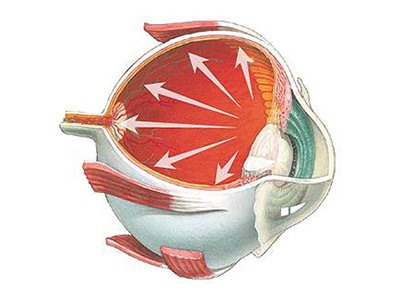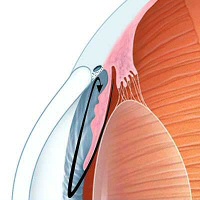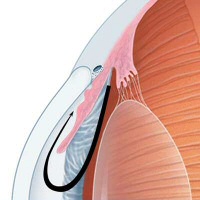
What is Glaucoma?
Glaucoma occurs due to disruptions in the drainage of the intraocular fluid, resulting in excessive pressure within the eye. The excessive pressure inside the eye causes damage to the nerve layer of the eye. Glaucoma is also known as "eye hypertension" or "dark water disease" among the public.To maintain the normal hardness, nutrition, and proper function of the eye, a special eye fluid is continuously produced inside the eye. In a healthy eye, this fluid is periodically expelled from the eye, preventing excessive pressure inside the eye. If the channel through which the eye fluid is expelled narrows or becomes blocked, the pressure inside the eye increases due to the production of new eye fluid, leading to damage to the nerves.
What are the Symptoms of Glaucoma?
In the early stages of glaucoma, there are usually no symptoms, and the person may not notice it. However, in advanced cases, symptoms of glaucoma may include blurred or narrowed vision, seeing colored rings, eye pain, headaches, redness in the eyes, nausea, and vomiting.What are the Types of Glaucoma?
Open-angle glaucoma is the most common type of the disease. It usually occurs after the age of forty and progresses silently without symptoms. In advanced stages of the disease, it manifests with vision loss. In such cases, since the damage to the optic nerves is high, the treatment is limited to preserving the existing vision, and the lost vision cannot be restored. Therefore, regular eye examinations, especially in people over middle age, play an important role in the early diagnosis of glaucoma.Closed-angle glaucoma is a less common type of glaucoma. Closed-angle glaucoma requires urgent intervention when the angle closes. The eye pressure in the patient suddenly rises to very high levels. Symptoms include sudden and severe eye pain, redness, blurry vision, nausea, and vomiting. Immediate medical intervention is necessary, and eye pressure should be reduced by the doctor; otherwise, complete vision loss can occur in a short period.
How is Glaucoma Diagnosed?
The greatest risk factor for glaucoma is high eye pressure (ocular hypertension). Eye pressure is generally considered borderline if it is between 18-22, and high if it is higher. Eye pressure measurements can provide a general idea of whether a person is a glaucoma candidate. However, it should be noted that eye pressure that can damage the eye varies from person to person. Therefore, to diagnose glaucoma, other tests are needed, especially in the early stages. Thus, it can be determined whether the pressure detected in the patient causes damage to the optic nerves, and if so, whether there is progression.- Eye pressure (Measurement of intraocular pressure)
- Ophthalmoscopy (Examination of the optic nerve head)
- Perimetry (Visual field tests)
- Optical Coherence Tomography (OCT) (Optic nerve imaging tests)
- Gonioscopy (Angle assessment tests)
Regular eye examinations and follow-ups are important in the diagnosis of glaucoma.
Why is Early Diagnosis of Glaucoma Important?
Early diagnosis of glaucoma is important because early treatment can prevent or slow down vision loss. Glaucoma can lead to permanent vision loss, especially when it progresses without many symptoms. Early diagnosis and treatment can reduce damage to the optic nerve and help control the progression of the disease.How is Glaucoma Treated?
The goal of glaucoma treatment is to prevent the progression of the disease. Vision loss caused by glaucoma is irreversible. The only proven method to prevent the progression of the disease is to lower intraocular pressure.In the case of open-angle glaucoma, treatment in the early stage is done with eye drops or oral medications.
In the case of closed-angle glaucoma, after the sudden increase in eye pressure is medically reduced, surgery should be considered as an option. If such eyes are detected early, they can be relieved of the risk of attack with YAG Laser Iridotomy.

Normal Angle

Narrow Angle
Laser Treatments: In some cases, the SLT (Selective Laser Trabeculoplasty) method may have a lowering effect on eye pressure for several years. If eye pressure cannot be reduced with these methods, the remaining option is to open a channel to drain the intraocular fluid using various surgical techniques.
Surgical treatment: Trabeculectomy, Ahmed Glaucoma Valve implantation.
MIGS (Minimally Invasive Glaucoma Surgery): Surgical procedures using stent-like implants to lower intraocular pressure.
The choice of treatment depends on the patient's condition, the type of glaucoma, and its progression. Regular check-ups and follow-ups are important during the treatment process.




